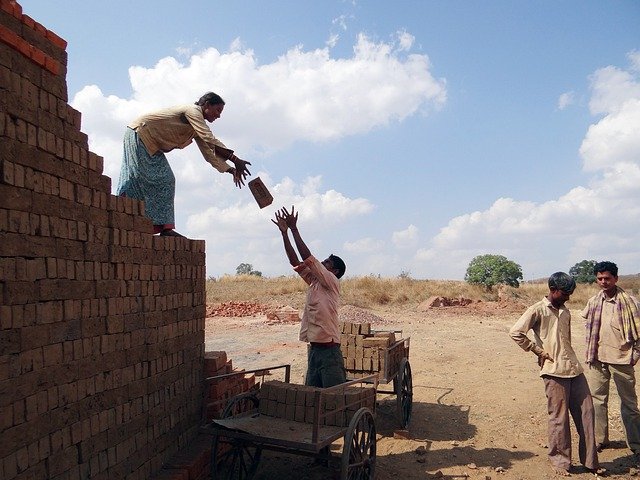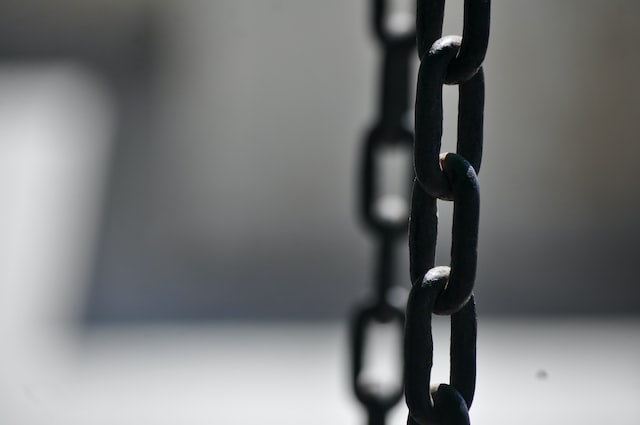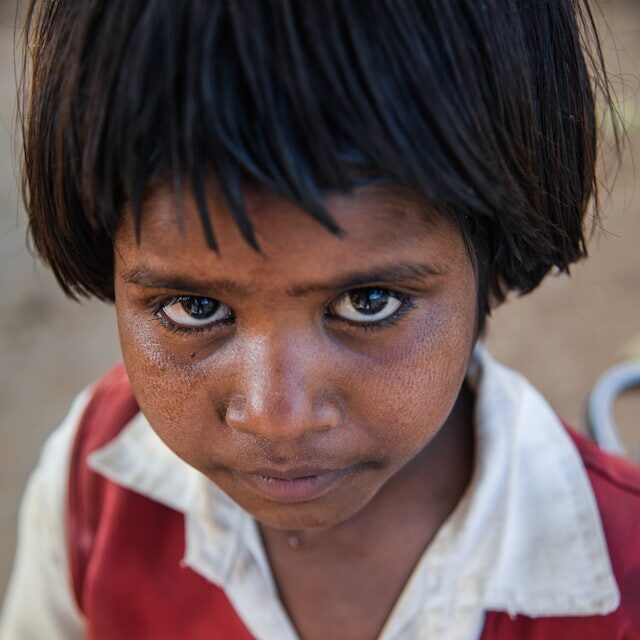They work in the brick factory or cut trees from six in the morning until one o‘clock in the night. For this, they often aren’t paid at all, or make just a few dollars a week. Bonded labor is the most common form of slavery worldwide and forces about 15 million people into dependency in India alone.
It starts with a family member having to take out a loan to afford necessary expenses. However, this loan usually comes with high interest rates and cannot be repaid, or at least not immediately. It is therefore common for entire families in India to commit to working for the lender in order to work off the debt. This can be passed down through generations. In many cases, workers are paid no wages at all, or only small amounts, such as the equivalent of $22 per week, which is about half the minimum wage in India.

WORKING UNDER MISERABLE CONDITIONS
Whole families have to work up to 18 hours a day in brick huts, on farm, in quarries or in construction. Other areas where bonded labor is common are in the production of carpets, bidis (Indian cigarettes), shrimp or work as domestic help. In Punjab, workers in brick huts work 14 hours a day for less than minimum wage. Families work as a team, with work starting at midnight. Workers have to fetch hot bricks from the kiln, among other tasks. There are no breaks if someone is unwell, and workers are not allowed to go to the hospital either. If someone in the family dies, there is no compensation for the relatives. Children also work 7 to 12 hours per day. They are essential to the system, as children under 14 make up one fifth of the workforce in India.
POVERTY, CORRUPTION AND CASTE SYSTEM ENCOURAGE SLAVERY
There are many causes of debt bondage. People usually fall into the debt trap due to high expenses, such as a wedding, the birth of a child, a medical emergency or a death. The real problems, however, lie much deeper: for one thing, the Indian caste system contributes to debt bondage, which divides people into different social groups and divides Indian society into hierarchies to this day. Ninety percent of the people in bonded labor are Dalits, i.e. belong to the lowest caste, the so-called “untouchables”. They have (at least de facto) no rights and are dependent on the higher castes. Extreme poverty among the population, corruption among those in power and the rapid increase in population, which makes workers an exchangeable commodity, also favor the spread of bonded labor.
ILLEGAL BUT ONGOING
Bonded labor has been banned in India since 1976, and a law against human trafficking and forced labor was passed in 1982. Bonded labor is punishable by 3 years in prison or a fine of 2,000 Indian rupees. In reality, however, this does not change the situation for people in bonded labor, because many Indians do not know about their rights and the government. The police and the court system also do little to prevent bonded labor. Sadly, the police are very reluctant to prosecute and the government even weakens workers’ rights. Judges, on the other hand, often do not recognize slavery as such, arguing that people are not “held in bondage” and can basically leave at any time.
That this is not the case is shown by an example from Rampura in the state of Uttar Pradesh. When the family of Babu Shah and Shana Begum refuses to continue working in a brick hut after not being paid for three years, the owner sues them for 125,000 rupees (the equivalent of about 1,575 euros). He sends the police around twice per day, who then harass the family’s children. People in bonded labor are not physically detained, but intimidated with threats and made to depend on the non-payment of wages. It is still slavery, only the method of enforcement has changed.

NGOS DO THE WORK
Because little is done officially, in practice it is mostly NGOs and other organizations that bring about change. Often, however, it is not possible to claim the money that the workers are entitled to because they do not know for which employers they have worked. The NGO Jan Jagriti Kendra takes care of workers before they get into debt. The organizations Anti-Slavery International and Volunteers for Social Justice (VSJ) founded workers’ movements in India. VSJ issues ID documents to the workers and informs them about their rights.
The BBC Media Action project also set itself the goal of educating workers. Firstly, the radio program Majboor Kisko Bola was launched and is broadcasted in 110 villages that had previously been cut off from the outside world and had no TV, radio or newspapers – and sometimes not even electricity. The program educated listeners about their rights and informed them about government policies. As a result, more than 3,000 people applied for minimum wages and the acceptance of the “untouchables” increased. Local journalists were also trained to recognize and report on forms of slavery. As a result of the increased reporting, 200 people were freed from bonded labor.
WOMEN AND CHILDREN SUFFER SUBSTANTIALLY

Life in debt bondage means inhumane conditions for all concerned. Yet, it is the rights of women and children that are most abused. Children are denied the right to study or other education, leaving them to grow up without hope and having to watch their parents being endure the constant mistreatment and abuse. According to the law, children should be given certificates of release for their work, absolving them from the supposed guilt of their families – but in most cases this does not happen. Often parents also have to give their children as collateral while they work off their debts. The children are then also used as free labor. Women also don’t receive money, even though they make up 40% of the labor force. The money a family takes in is usually paid to the male head of the family. Slavery, sexism and child labor are thus closely linked here, as in many cases.
EDUCATION, MICROCREDIT AND HIGHER PENALTIES AS A WAY OUT – AND WE CAN DO SOMETHING, TOO
In order to abolish bonded labor once and for all, various approaches are needed, according to charity initiator Bernadette David. There must be higher penalties to make bonded labor less attractive for employers. Workers and employers should have direct access to the market to avoid expensive middlemen. Effective rural education programs and anti-poverty initiatives are desperately needed. In addition, poor people should have access to trustworthy micro-credits so that they do not run up debts with employers who exploit them for years or decades. But we can also help end modern slavery in India: If we are willing to pay more for a fairly traded product, we can ensure that no one is exploited for our consumption.
Translated by Emily Schiffer
#againsthumantrafficking #gegenmenschenhandel #endexploitation #endtrafficking #hopeforthefuture #guilt #bondage #india #modernslavery
